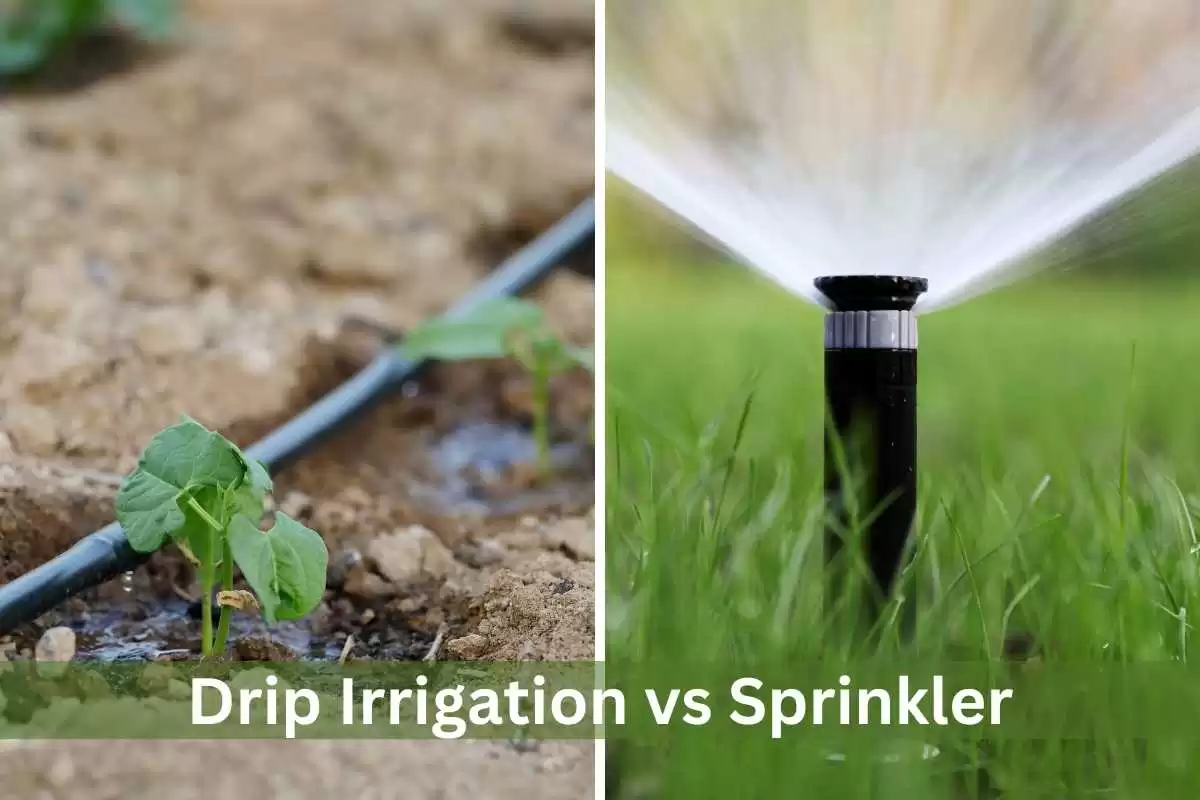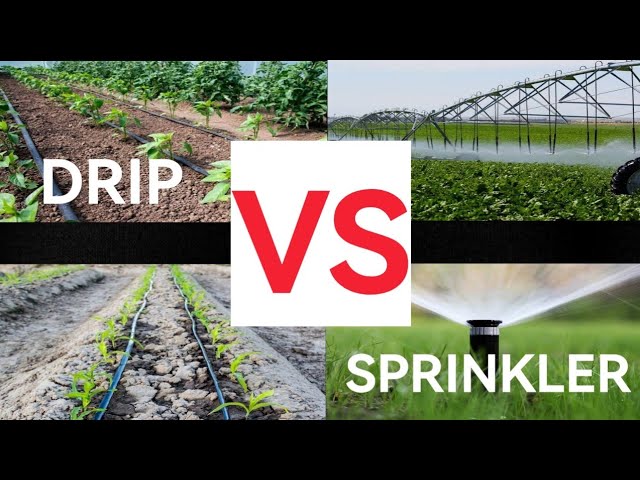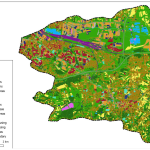When it comes to watering your garden or farm, choosing the right irrigation system can make all the difference. Are you tired of seeing your plants wilt in the summer heat or worrying about water waste?
You’re not alone. Many gardeners and farmers face the same dilemma: Sprinkler vs Drip Irrigation. Which is better for your needs? Imagine a world where your plants get just the right amount of water, leading to lush growth and bountiful harvests.
This isn’t just a dream—it’s within your reach. But first, you need to decide on the best irrigation method. This choice can impact not only your water bill but also the health of your plants and the environment. We’ll break down the pros and cons of both sprinkler and drip irrigation systems. We’ll help you understand which option aligns best with your gardening goals and environmental concerns. Ready to transform your watering routine and maximize your garden’s potential? Keep reading to discover the right fit for your green space.

Irrigation Basics
When setting up an irrigation system, understanding the basics can make a world of difference. Whether you’re watering your garden or a larger landscape, choosing the right method impacts your plants’ health and your water bill. This section will help you grasp the fundamentals of irrigation, paving the way for smarter choices.
What Is Irrigation?
Irrigation is the process of supplying water to plants at regular intervals. It mimics the natural rainfall to help crops grow, especially in areas with inconsistent precipitation. While this might sound simple, the method you choose can greatly influence the efficiency and effectiveness of watering your plants.
Why It Matters
Picture this: a lush garden thriving under your care. But what if you could save water and still achieve this? That’s where understanding irrigation becomes crucial. The right system ensures your plants get the moisture they need without wasting resources. Efficient irrigation not only conserves water but also supports healthy plant growth.
The Role Of Sprinkler Systems
Sprinkler systems distribute water over a wide area, much like rain. They are ideal for lawns and large gardens. However, they can lead to water loss due to evaporation and wind drift. If you’ve ever watched a sprinkler spray half its water into the air, you know what I mean.
Understanding Drip Irrigation
Drip irrigation delivers water directly to the plant roots, minimizing evaporation and runoff. It’s perfect for small gardens or areas with specific water needs. Imagine watering only where it’s needed, much like giving each plant its personal water bottle.
Choosing The Right System For Your Needs
Think about your garden’s layout and the plants you grow. Do they require consistent moisture, or are they more resilient? Your irrigation choice should align with your garden’s specific needs. What works for a sprawling lawn might not be suitable for a vegetable patch.
Balancing Cost And Efficiency
Are you willing to invest in a system that saves water long-term? While drip systems might cost more upfront, they often reduce water bills over time. Sprinklers, on the other hand, might be cheaper initially but less efficient. Weighing these factors can guide you to the best choice.
As you ponder these questions, consider how each system aligns with your gardening goals. Whether it’s the wide-reaching sprinkler or the precise drip irrigation, each has its pros and cons. Which will you choose to enhance your garden’s growth and save water?

Sprinkler System Benefits
Choosing between a sprinkler system and drip irrigation can be challenging. Each method has its unique benefits and drawbacks. Let’s focus on the advantages of using a sprinkler system in your garden or landscape. Understanding these benefits might help you make an informed decision that best suits your needs.
Cost-effective Installation
Sprinkler systems can be a cost-effective option for many homeowners. They are relatively easy to install, especially for those with experience in DIY projects. Once you set it up, it requires minimal maintenance, which can save you money in the long run.
Wide Coverage
One of the standout features of a sprinkler system is its ability to cover large areas efficiently. If you have a big lawn or garden, sprinklers can distribute water evenly across the entire space. This ensures that every corner receives adequate moisture.
Automation Options
Modern sprinkler systems come with automation features. You can set timers to water your garden at specific times. This is ideal for those with busy schedules, as it offers convenience without sacrificing plant health.
Versatility
Sprinkler systems are versatile in their application. They’re not only suitable for lawns but also for flower beds and vegetable gardens. You can adjust the settings to match the specific needs of different plant types.
Enhanced Plant Growth
Uniform water distribution can enhance plant growth. With sprinklers, water reaches the roots evenly, promoting healthy growth. Have you noticed how some plants thrive better with consistent watering?
Environmentally Friendly
Using a sprinkler system efficiently can be environmentally friendly. By setting your system to water in the early morning or late evening, you reduce water evaporation. This not only conserves water but also ensures your plants get the hydration they need.
Reflecting on personal experience, I found that my garden flourished better with a sprinkler system. It saved me time and kept my plants healthy. How about you? Have you considered trying a sprinkler system for your garden?
Advantages Of Drip Irrigation
Drip irrigation offers precise water delivery directly to plant roots, minimizing water waste. Ideal for areas with water scarcity, it ensures efficient water use, reducing evaporation and runoff compared to sprinklers. This method promotes healthier plant growth by maintaining consistent moisture levels.
Drip irrigation is gaining popularity among gardeners and farmers alike, and for good reason. This method offers several compelling advantages that can make a significant difference in both the health of your plants and the efficiency of your water usage. Let’s dive into the specific benefits of choosing drip irrigation for your garden or farm.Water Efficiency
Drip irrigation is designed to deliver water directly to the roots of plants. This targeted approach minimizes water wastage. You use less water compared to traditional sprinkler systems, which often lose a lot to evaporation and runoff. This method is especially beneficial in areas prone to drought or with water restrictions. You can maintain a lush garden without breaking water usage rules.Better Plant Health
By supplying water directly to the roots, drip irrigation reduces the risk of plant diseases. Overhead watering can lead to wet leaves, which creates a breeding ground for fungus and mold. Your plants stay healthier, reducing the need for chemical treatments. This is a win-win for both your plants and the environment.Reduced Weed Growth
Weeds thrive in moist conditions, but with drip irrigation, water is only supplied where it’s needed. This means fewer weeds sprouting between your plants. You spend less time weeding and more time enjoying your garden. It’s a simple change with a big impact on garden maintenance.Cost-effectiveness
Although the initial setup for drip irrigation may seem high, it pays off in the long run. With reduced water bills and fewer expenses on plant treatments, you save money. Think of it as a smart investment for your garden’s future. You gain peace of mind knowing your garden is thriving efficiently.Flexibility And Customization
Drip irrigation systems can be easily tailored to fit any garden layout. Whether you have raised beds, rows of crops, or a backyard garden, this system adapts seamlessly. You can adjust the flow and timing to suit different plants’ needs. This level of control ensures each plant gets the right amount of hydration. Do you find these advantages appealing? If you’re ready to enhance your gardening experience, drip irrigation might just be the solution you’re looking for.
Choosing The Right System
Choosing the right irrigation system is crucial for successful gardening. Sprinkler and drip irrigation are the most popular methods. Each has its strengths and weaknesses. Understanding your garden’s needs helps you make the best choice.
Sprinkler Irrigation: Coverage And Versatility
Sprinklers cover large areas easily. They mimic natural rainfall, watering many plants at once. Suitable for lawns and open gardens. They offer versatility and can be adjusted for different spray patterns. Installation is generally simple. Maintenance involves checking for leaks and clogs.
Drip Irrigation: Precision And Efficiency
Drip irrigation delivers water directly to plant roots. It conserves water by minimizing evaporation. Ideal for flower beds, vegetable gardens, and shrubs. Drip systems reduce weed growth by targeting specific plants. Installation is more complex but offers significant water savings. Regular maintenance ensures emitters are clear and functional.
Climate And Soil Considerations
Climate impacts irrigation choice. In dry areas, drip systems save water. In wet climates, sprinklers provide adequate moisture distribution. Soil type also matters. Sandy soils benefit from drip systems, reducing water loss. Clay soils work well with sprinklers, preventing water pooling.
Budget And Long-term Costs
Initial costs can vary between systems. Sprinklers often cost less to install. Drip systems may require a higher initial investment. Consider long-term savings on water bills. Drip systems often lead to lower costs over time.
Environmental Impact
Both systems have environmental impacts. Sprinklers may lead to water runoff and evaporation. Drip systems use water more efficiently. Choose a system that aligns with your environmental goals. Sustainable practices benefit your garden and the planet.
Conclusion
Choosing between sprinkler and drip irrigation depends on your garden needs. Sprinklers cover large areas but may waste water. Drip systems save water and target roots directly. Consider your budget, garden size, and water availability. Sprinklers work well for lawns and bigger gardens.
Drip irrigation suits smaller, plant-focused areas. Assess your priorities and decide what fits best. Both methods have their benefits and limitations. Your choice can impact water usage and plant health. Think wisely and pick the right system for your garden’s success.



